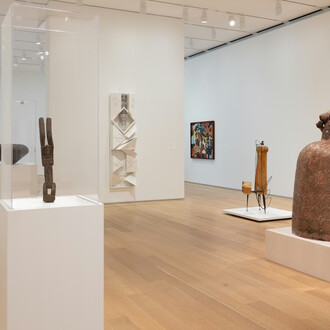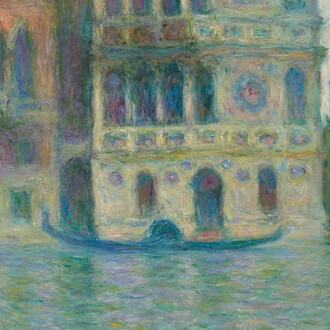In String Theory’s three-dimensional collages, string is the physical manifestation of thought in the act of making. For each sculpture, a single length of string is used to bind together its disparate objects, but the expected order of construction is inverted: the string starts from the top – the head – and is worked downwards in a symbiotic intertwining of gravity’s pull and the grounding of airy idea in function. Fundamental to the form of Hans Stofer’s practice is this union of concept and material, improvisation and knowledge, intuition and learned skills. Creativity is germinated in the mind but achieved in the act, filled with quixotic inventiveness and motile energy but also directed and connective.
The collaged accumulation of the bric-à-brac of the everyday – the once-useful, the almost-discarded, the previously-loved – carries emanations of the lived past into a new existence, adding the fourth dimension of time to the three spatial dimensions of sculpture. From the already existing emerges something unique, but the mundane pre-used materials used are not subjected to a process of modification or metamorphosis; instead, retaining their materiality, their identity as object, they become part of an alternative narrative that is defined by the significance they have acquired. In these sculptures there is an obdurate materiality of the object, a refusal to dissolve into the unified whole, which brings an edge of violence that continually threatens any sense of containment. Each piece is constructed as an act of balance, reminiscent of the ancient art of carrying vessels or belongings on the head, or stacking luggage or equipment on vehicle roofs. But balance is always precarious – a stumble, a blow, an unfurling knot can cause the whole edifice to succumb to gravity: the earthenware vessel shattering on the hard ground; the suitcase disappearing into the wind as the car accelerates down the motorway; the sculpture flying apart, destroying its own theoretical model of self-containment, its unique equilibrium.
The narratives of these pieces oscillate between presence and absence, coherence and incoherence, order and chaos. These stories are told both through the belongings and the words of others, collected from books, labels, newspaper phrases, rewritten in the personal tense. But these stories can also be unwritten. With a snip of the scissors, or a careful unfurling of knots, their condensed, explosive action can be diffused. The string that connects is innately violable, so that these sculptures are left poised in the act of becoming, caught up in the tension generated by their tenuous fragility set against their obdurate strength.
Text by Caroline Morpeth, 2014
S O Gallery
92 Brick Lane
London E16RL United Kingdom
Ph. +44 (0)20 73778008
info@galleryso.com
www.galleryso.com
Opening hours
Wednesday - Saturday from 12pm to 6pm
Sunday from 12pm to 5pm or by appointment














